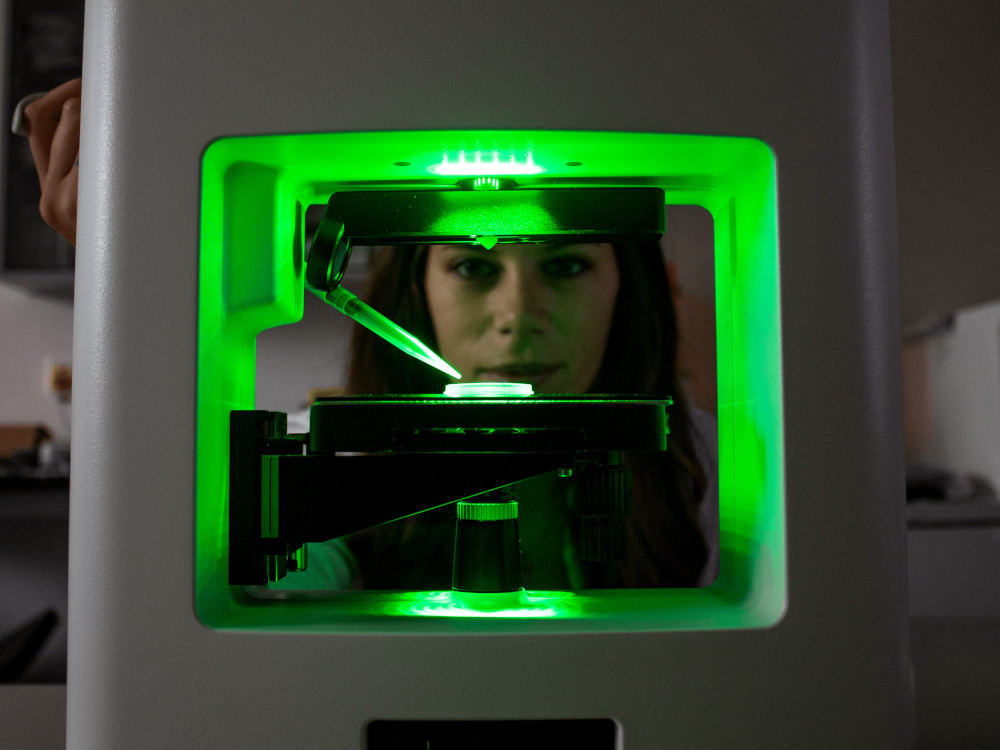
13 Feb Holotomographic microscopy: red blood cells in focus
Red blood cells, the erythrocytes, normally have a round, donut-like shape. Some changes in the shape of erythrocytes are typical of specific changes in the environment: for example, so-called datura cells with pointed protrusions occur in the event of burns, liver damage or contact with certain medications. Researchers from the Swiss Federal Laboratories for Materials Science and Technology (Empa) have now been able to observe the transformation of red blood cells into datura cells using digital holotomographic microscopy.
Computer tomography with lasers
Talia Bergaglio and Peter Nirmalraj from the ‘Transport at Nanoscale Interfaces’ laboratory in Dübendorf provoked the deformation of living red blood cells by adding the drug ibuprofen. Thanks to holotomographic microscopy, they were able to track the transformation from the round donut shape to datura cells in real time. This technique works in a similar way to computer tomography (CT), whereby imaging takes place using laser technology instead of X-rays. Digital holographic microscopy is therefore particularly suitable for biological samples such as blood cells, as it enables high-resolution, non-contact and marker-free images that can then be reconstructed into a three-dimensional representation.

The round shape of a healthy erythrocyte (left) is reminiscent of a doughnut. After contact with ibuprofen, the blood cells form bumps and spikes and turn into so-called datura cells. Image: Empa
Interaction with drugs in real time
Red blood cells are a perfect model system here, as they separate from all components that prevent them from performing their main task of transporting oxygen in the course of their lives; they are ultimately almost empty membrane envelopes. “This is why our imaging method is particularly suitable for investigating the interactions of a large number of drug molecules with the cell membrane in red blood cells,” says Empa researcher Nirmalraj.
Source and image: www.empa.ch






